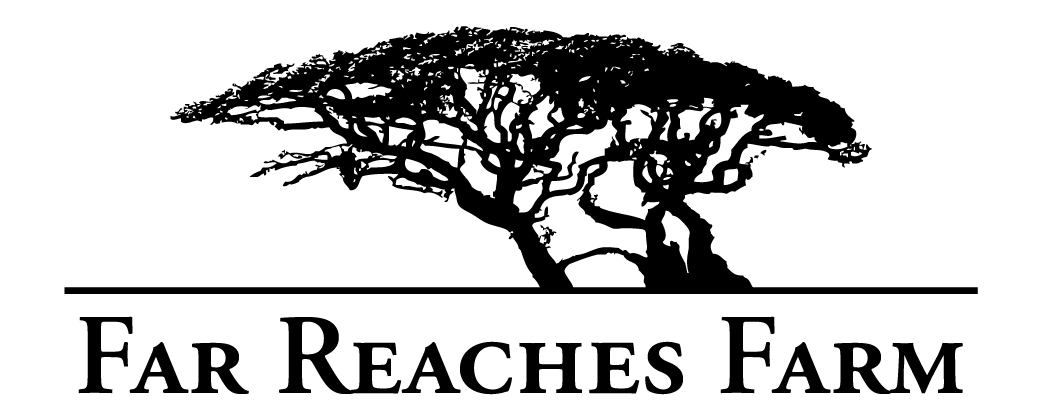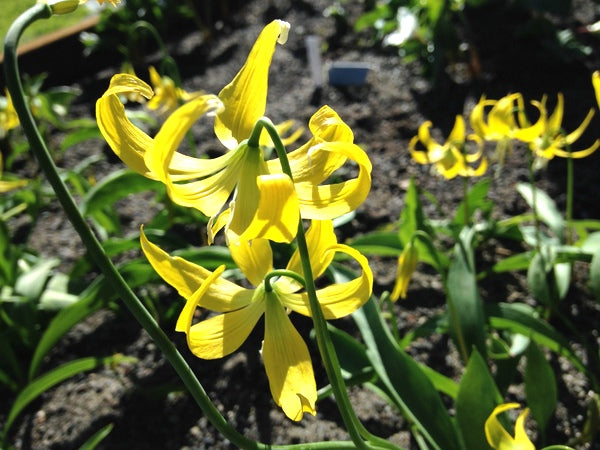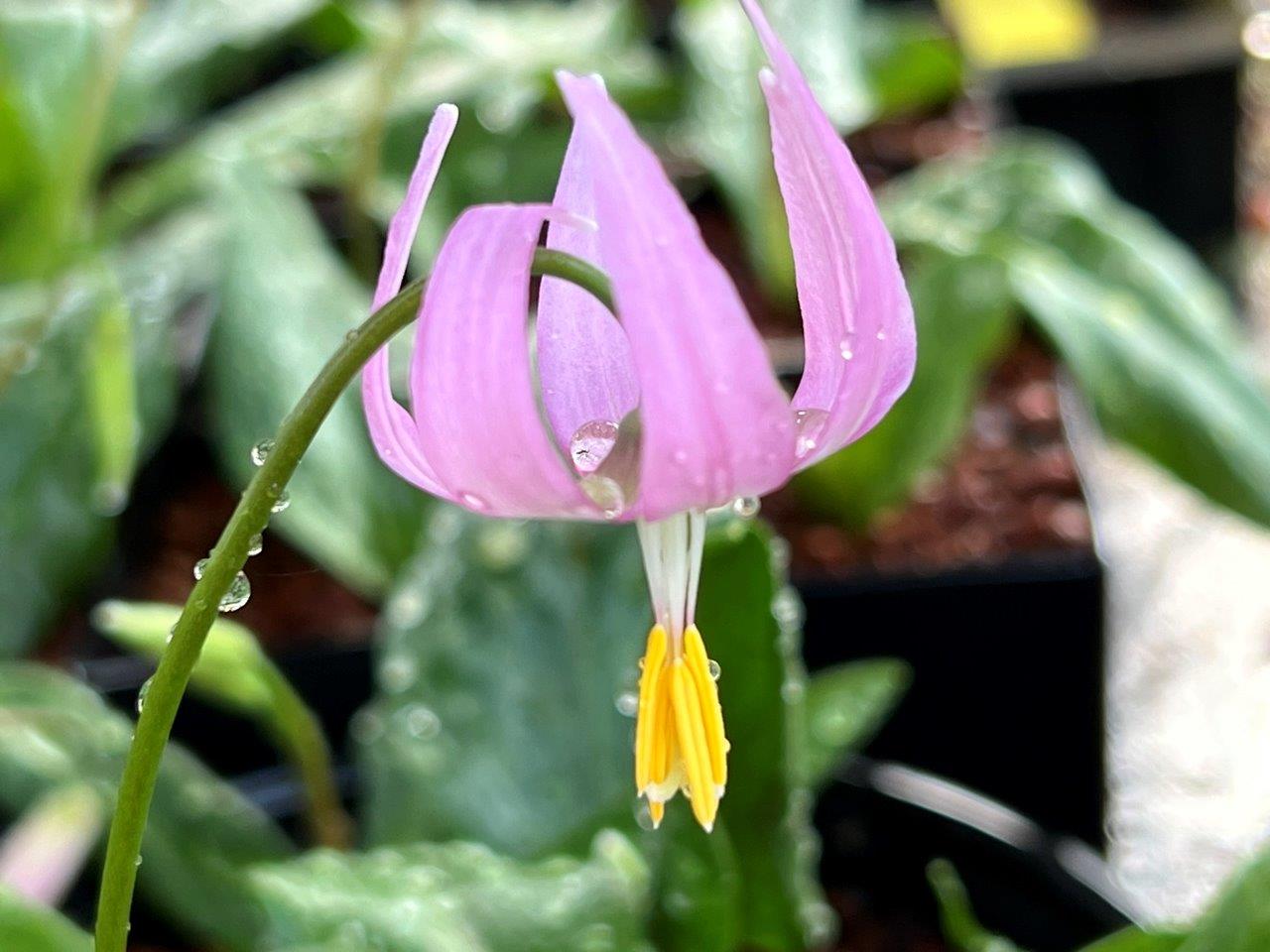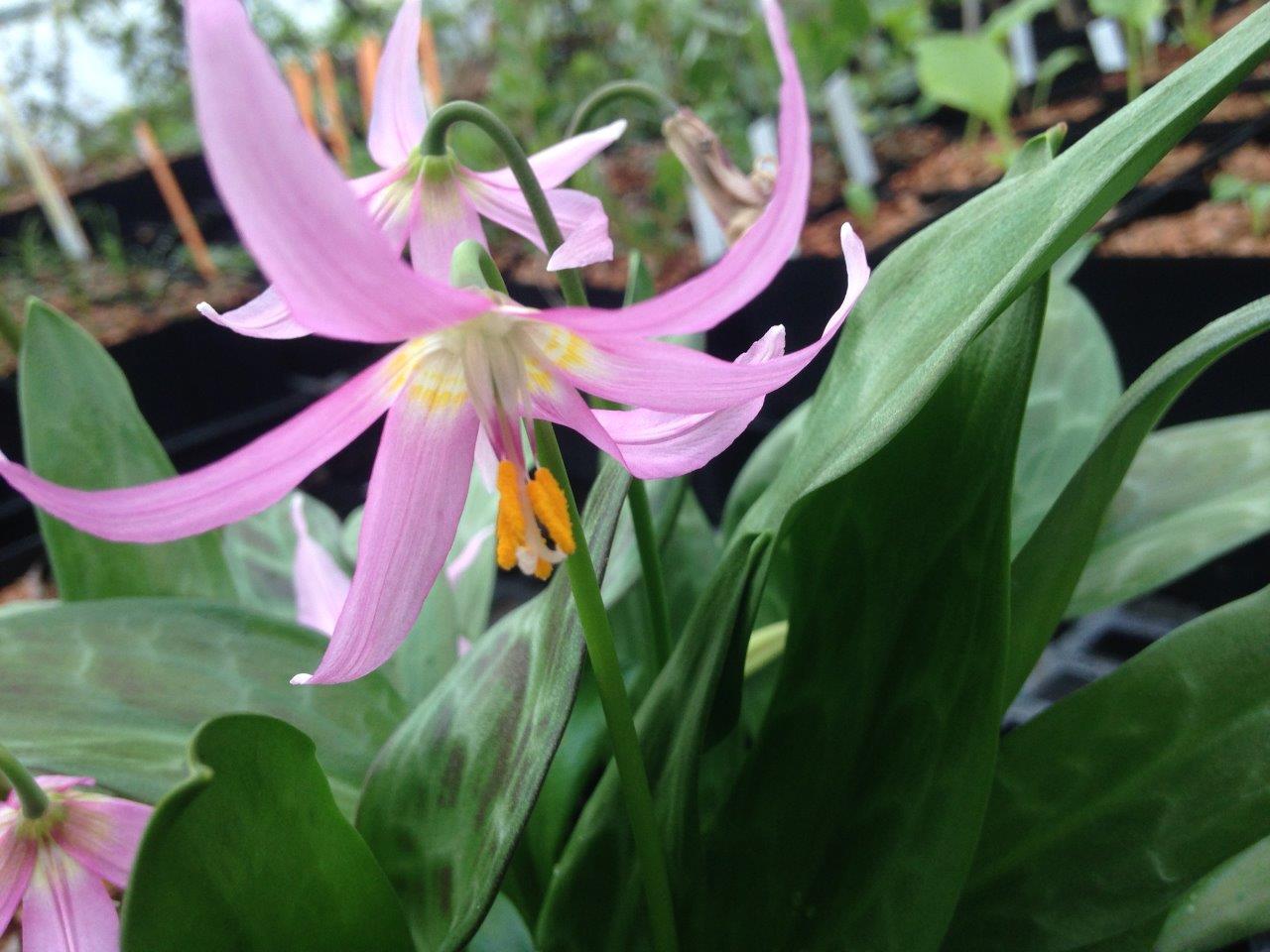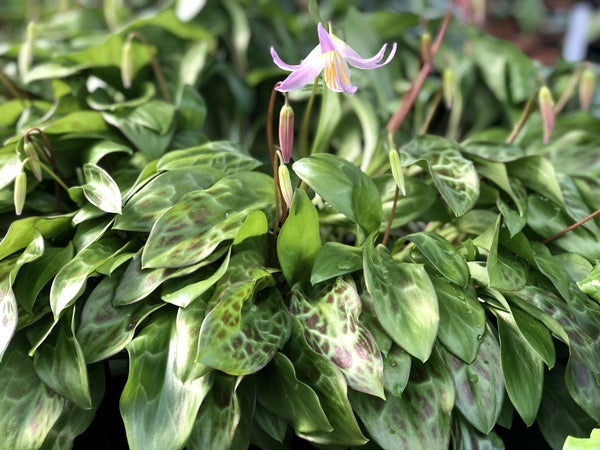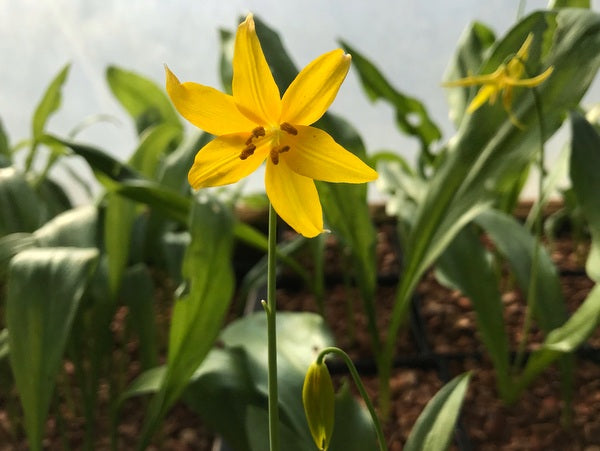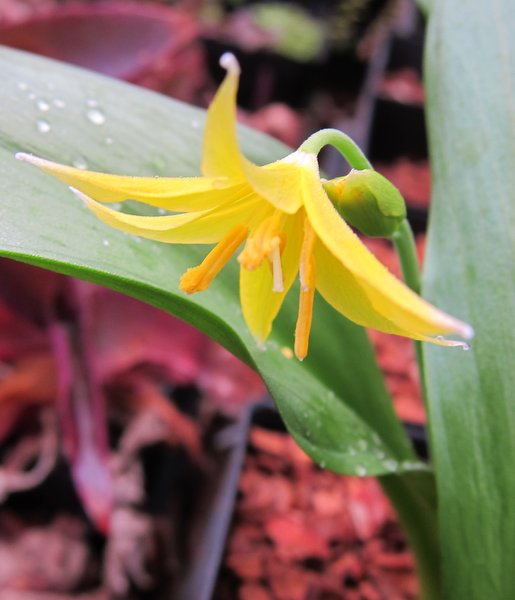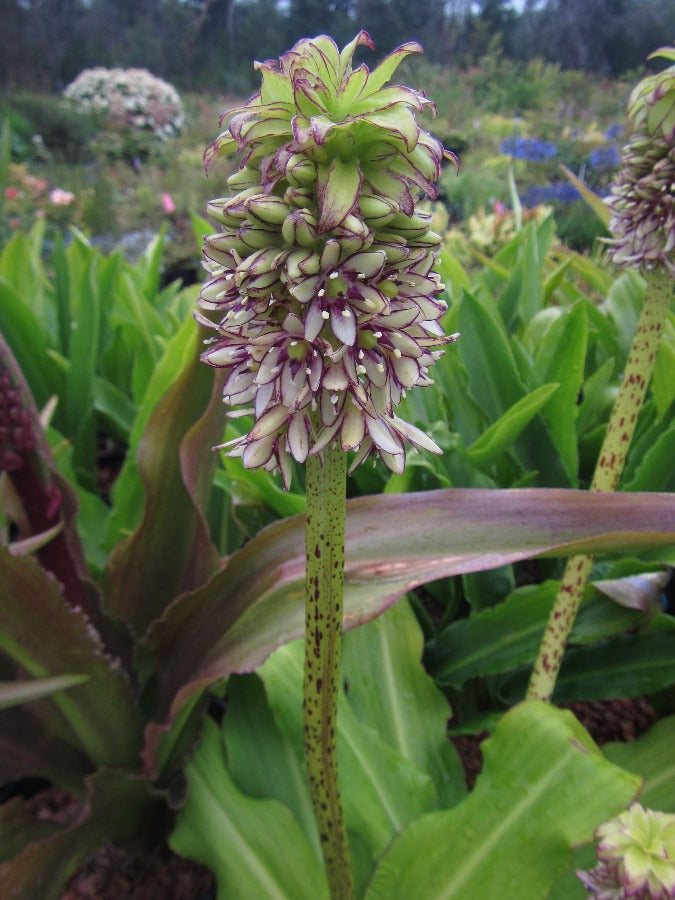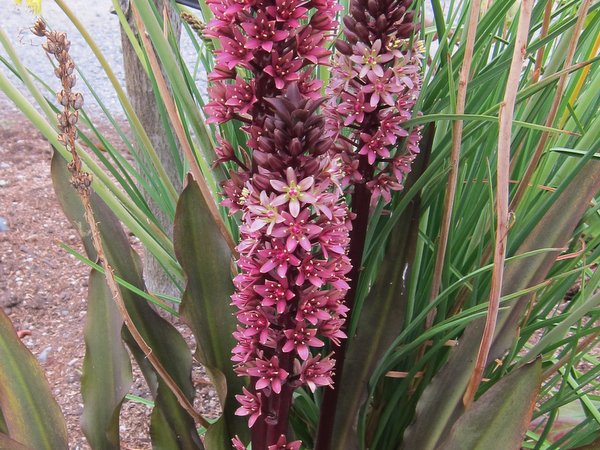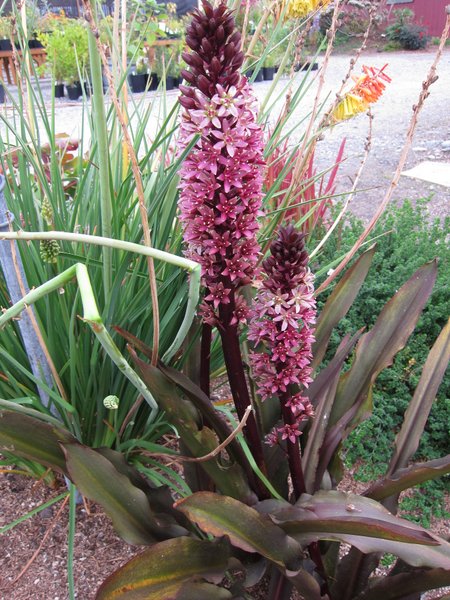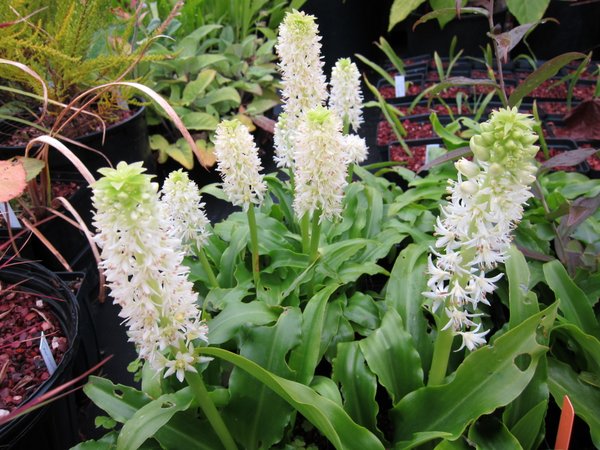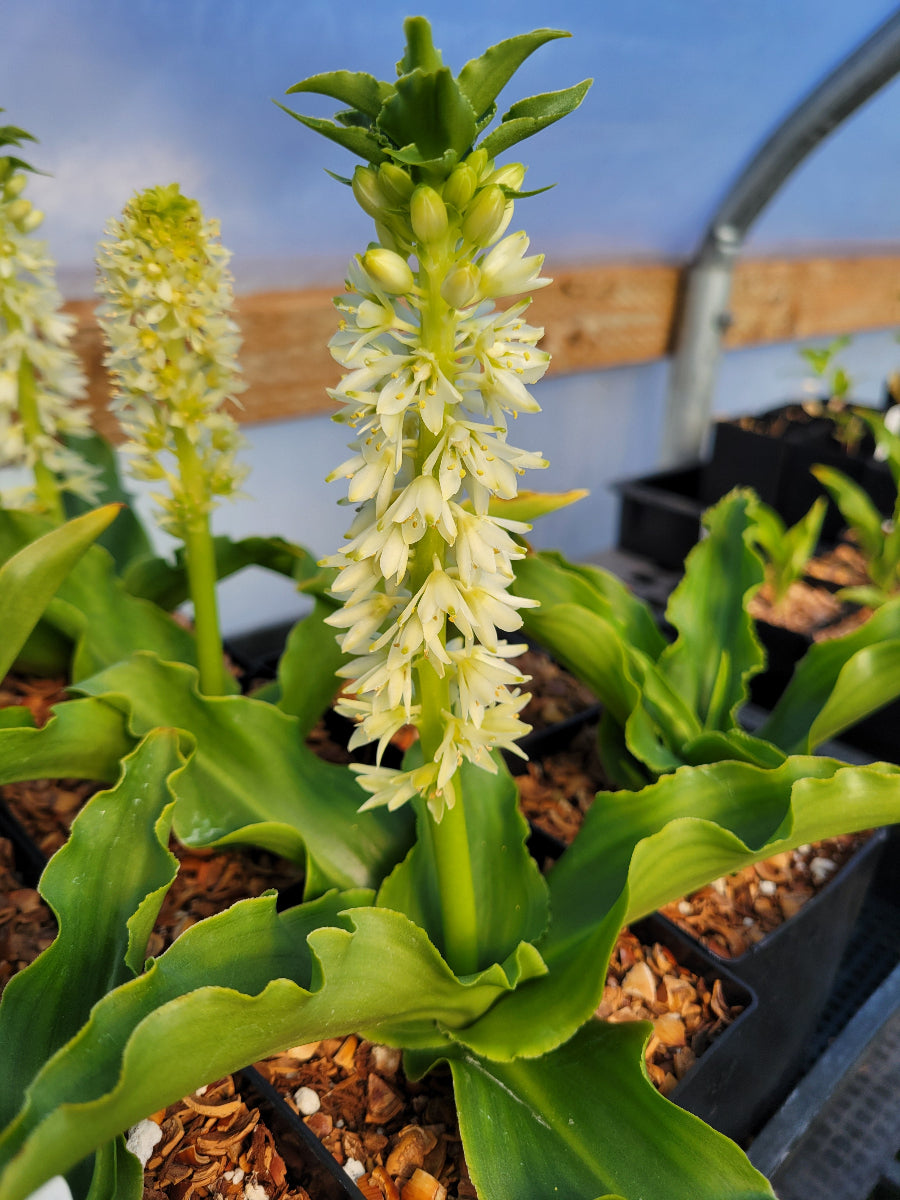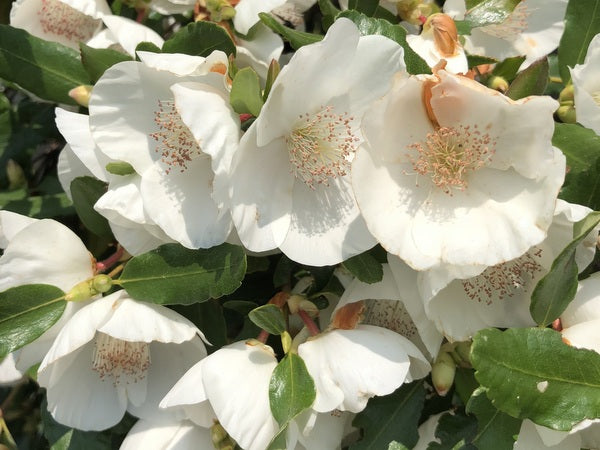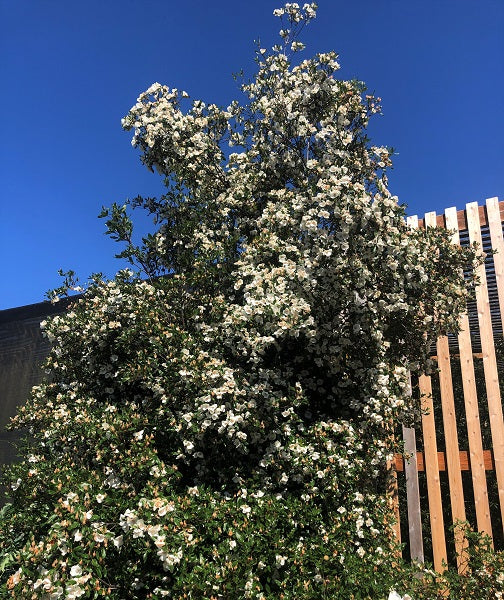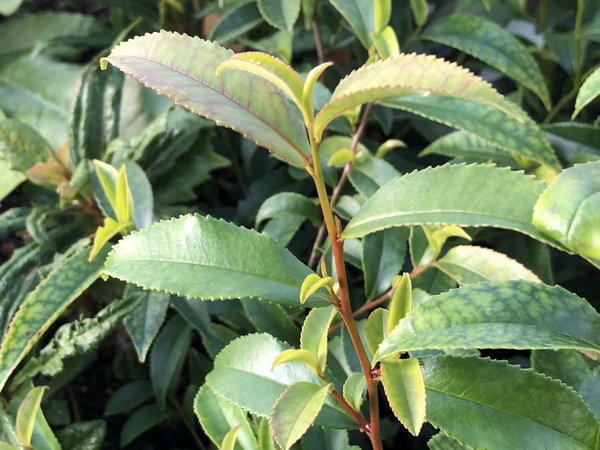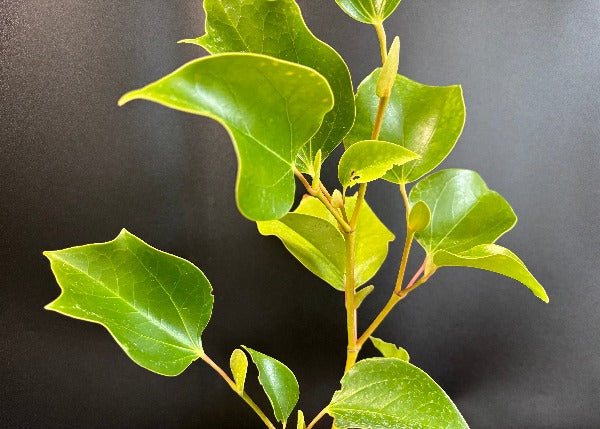Sort by:
1775 products
1775 products
One of our oh-so-lovely West coast native Erythronium species, here from seed collected by the great Ron Ratko formerly of Northwest Native Seed. Reflexed pink lily-esque flowers with a white center. Seeing the subalpine sweeps of these out in the woods is an experience well worth recreating in a home garden bringing a joyful breathlessness to the yearly spring renaissance. Rich, humusy, moist soil with partial shade is optimal but can flex a bit if needed.
Like a true American statesman this plant fulfills none of it's promises and gives you plenty of the unexpected. Contrary to it's common name of Pineapple Lily this is neither pineapple nor lily, luckily the unexpected reality is a shockingly easy South African summer bulb. Attractively lax rosettes of thick strappy light green leaves sometimes freckled red at the base. Flowers in a raucous spike of pink and white stars topped by an unkempt mop of green bracts, almost like a florist's recreation of a pineapple. Easy to please in a sunny spot with decent soil and can tolerate some degree of shade.
Typically a white-flowered Tasmanian native evergreen tree, this pink version was found in 1984 by Ken Gillanders. Must have been jaw-dropping as the plant was 65' tall although the tallest in cultivation is perhaps 25'. Serious authorities have it hardy zones 7-10 but we'll say Z 8-10 and best sheltered from freezing/drying wind. Bees love this adding kinetic beauty plus the species accounts for the majority of honey production in Tasmania. These are small cutting grown trees.
A hybrid between E. moorei and E. lucida that grew from a chance cross at Hillier's nursery, the original plant was cloned and distributed under the name 'Winton' and we preserve that name here to differentiate it from any further x hillieri selections. Retains the glossy narrow semi-evergreen foliage of its parents with pure white flowers beloved by bees and pollinators. Has shown excellent hardiness, anecdotally surviving a below 10F winter freshly planted in a nearby garden. A child which may well outexcel its parents.
